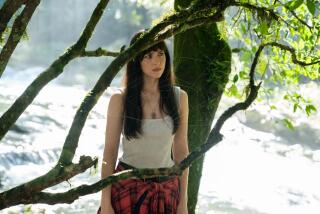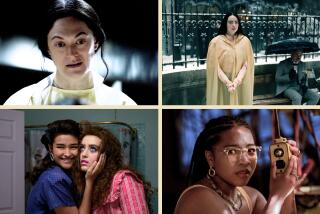Five Days of ‘Her’: How to shoot the future
In honor of the delicate future of Spike Jonze’s “Her,” we’ve been chatting with the team that helped him realize those not-so-far-off days. (You can read previous installments, on costumes and production design, here and here).
Today, a talk with Hoyte van Hoytema, the decorated Swiss-Dutch cinematographer who shot the film.
Movies Now: When you first heard about shooting a movie like this set in the future, you must have thought, “Oh, a movie set in the future. I know what this might look like.” And then —
Hoyte van Hoytema: It’s very funny. I talked to Spike before I read the script and was imagining what it would be like. But then he described his ideas and feelings about it and it became clear what he wanted. And the script, even though it’s described very lightly, you get a strong atmospheric impression of what this needs to be, and how different it needs to be from most movies set in the future.
PHOTOS: Movie scenes from ‘Her’
MN: From talking to [costume designer] Casey Storm and [production designer] K.K. Barrett, it seems like the governing principle wasn’t so much about the things all of you did want than what you didn’t want — things that make it seem too stereotypically “futuristic.”
HVH: There are a lot of items like that. I wanted to avoid certain light sources, certain things that will make you connect it with something you know well. A lot of times we’d be building up the frame and then we’d say, “Let’s eliminate certain things so it looks more like a hypothetical universe.” We were also trying to create a very comfortable L.A. So it’s very much chasing the sun and capture moments in which the light is most gentle toward the city.
MN: The production also had the infamous “no blue” rule. That was your rule, wasn’t it?
HVH [laughs]: Those rules are a little nerdy. But they help. They help you make something realistic, or something unrealistic, or something realistic with a twist, which is what I think this is.
MN: How specific was Spike in saying he wanted it to look a certain way?
HVH: Spike is one of those great directors who has very specific ideas. But what he’s really after is a feeling. He’s someone who can be concrete but also doesn’t want to be too concrete because he wants to find things between the lines. It allows you to find the poetry as a cinematographer.
MN: Much of the film has Joaquin Phoenix’s face in extreme close-up. Why was that choice made? Was it simply a matter of the intimacy or...?
HVH: As much as I’d like to say that’s an artistic choice, in some ways it was really us forced into a corner. Samantha [Scarlett Johansson’s character] is just a voice, and Joaquin is alone, so we had to rely on Joaquin and his expressions. For the movie to work you have to access Theodore’s [Joaquin character’s] feelings, and when we tried to give a little distance it didn’t work. We lost the intimacy when we drifted away from him.
MN: That can’t be easy, for him but also you, spending so much of the movie right up there practically in his mustache.
PHOTOS: Billion-dollar movie club
HVH: It’s a big challenge. It’s hard to keep making those close-ups interesting enough that you keep watching. You had to know the exact second when it was too much. But you needed to do it a lot of the time. We tried to do it different ways like shooting behind his neck or these other tricks and every time we did it felt like we stepped out of the universe.
MN: Of course when you did go wide you had a different challenge: how to make Shanghai and L.A. look like the same place (and yet a totally different place than either city).
HVH: That’s where you need strong direction, merging two cities like that. It’s a big puzzle. We’d find this office in middle of L.A. and that felt right, and then a square in Shanghai that made you feel how big that city has become and that felt right, and then an interior in L.A. And we’d have to take all of those locations and make them work in the same scene.
MN: You were coming off shooting “Tinker Tailor Soldier Spy.” I can’t imagine a movie more different in setting or tone.
HVH: It’s pretty different. But in many ways this is a period piece too. It’s just a period that hasn’t happened yet.
ALSO:
Five days of ‘Her:’ How Spike Jonze created the future
Five days of ‘Her: ‘Building a future to feel like the present
With voice-centric ‘Her,’ Spike Jonze makes a statement
Follow me on Twitter at https://twitter.com/ZeitchikLAT
More to Read
Only good movies
Get the Indie Focus newsletter, Mark Olsen's weekly guide to the world of cinema.
You may occasionally receive promotional content from the Los Angeles Times.







